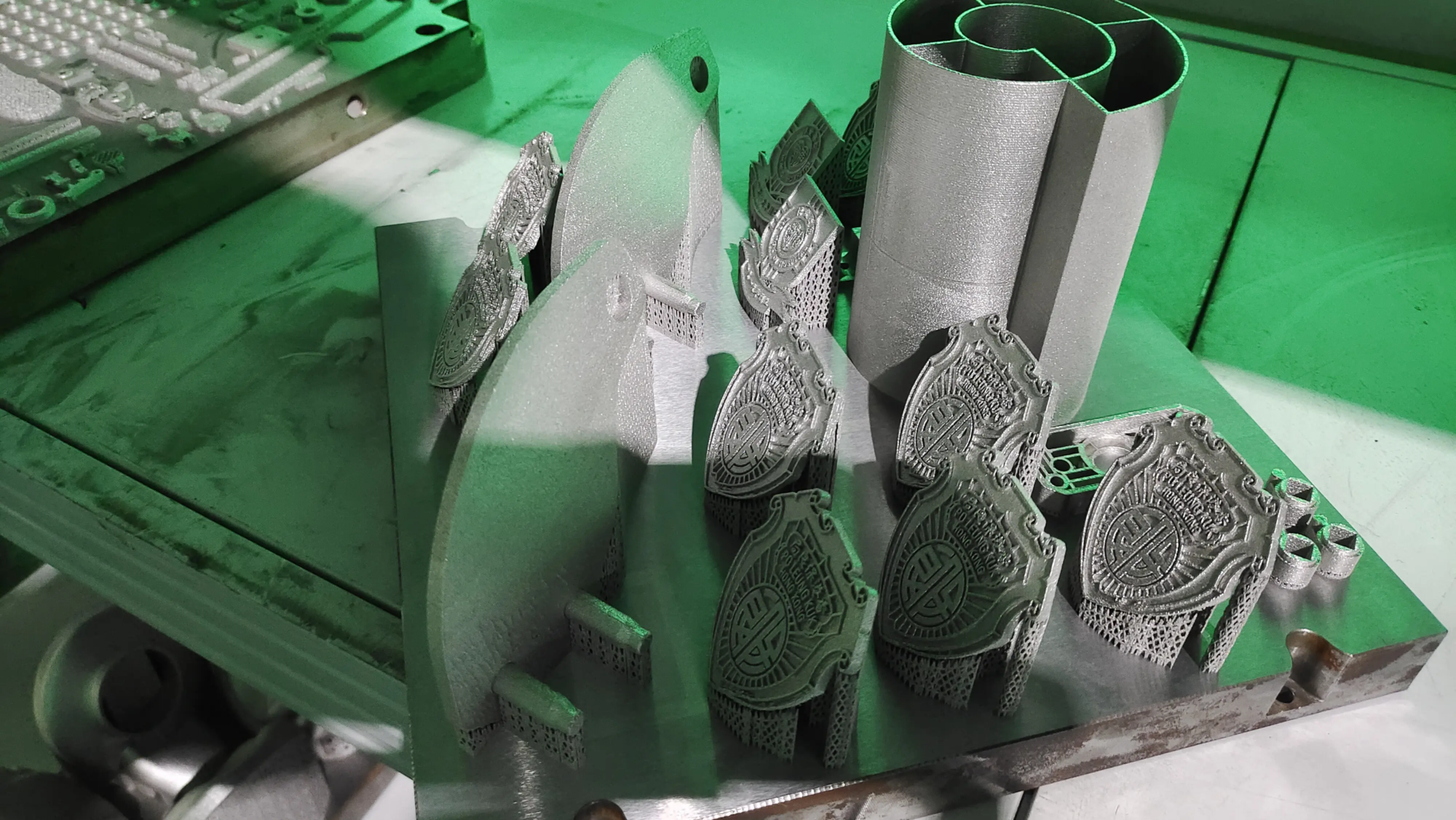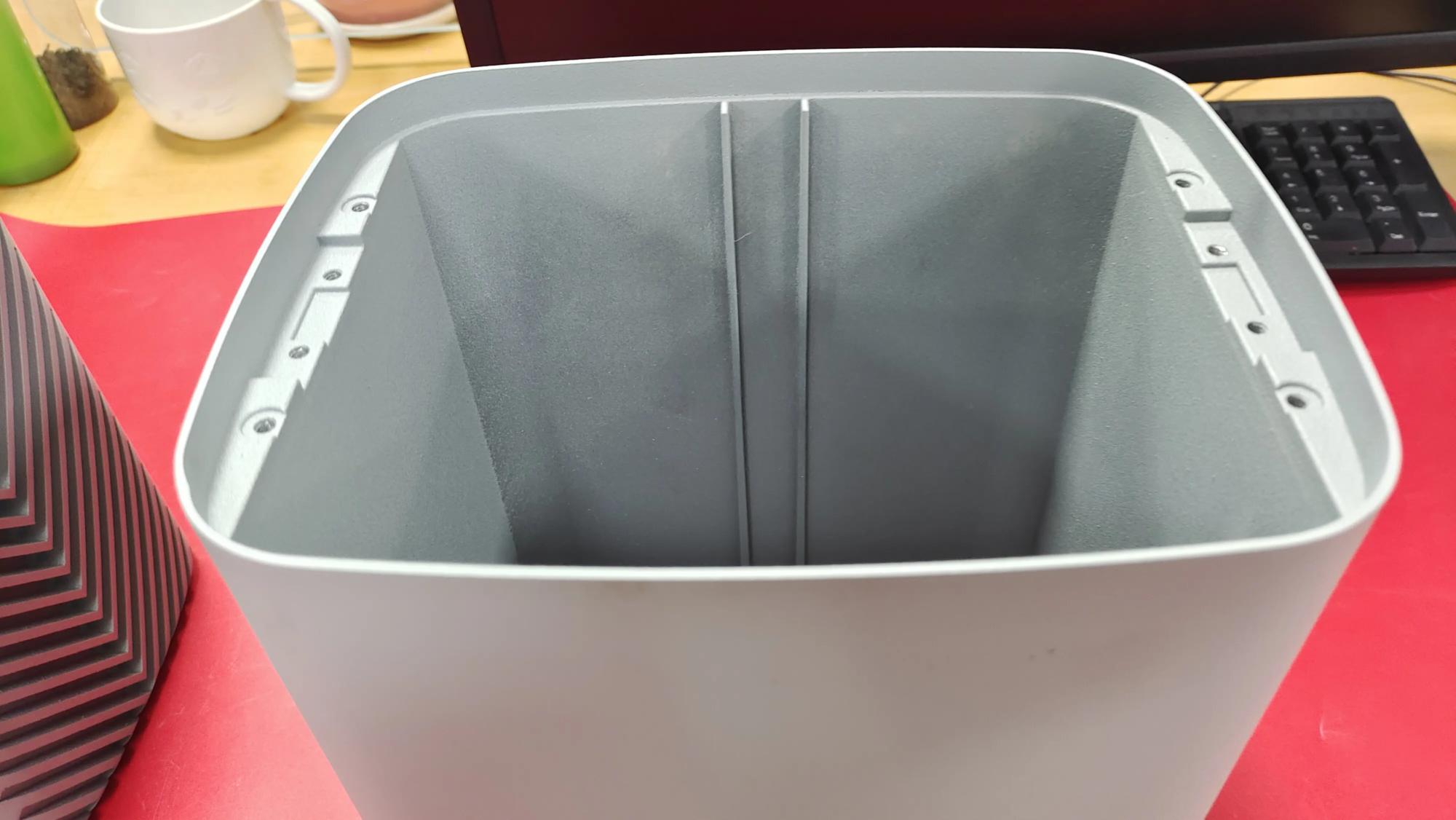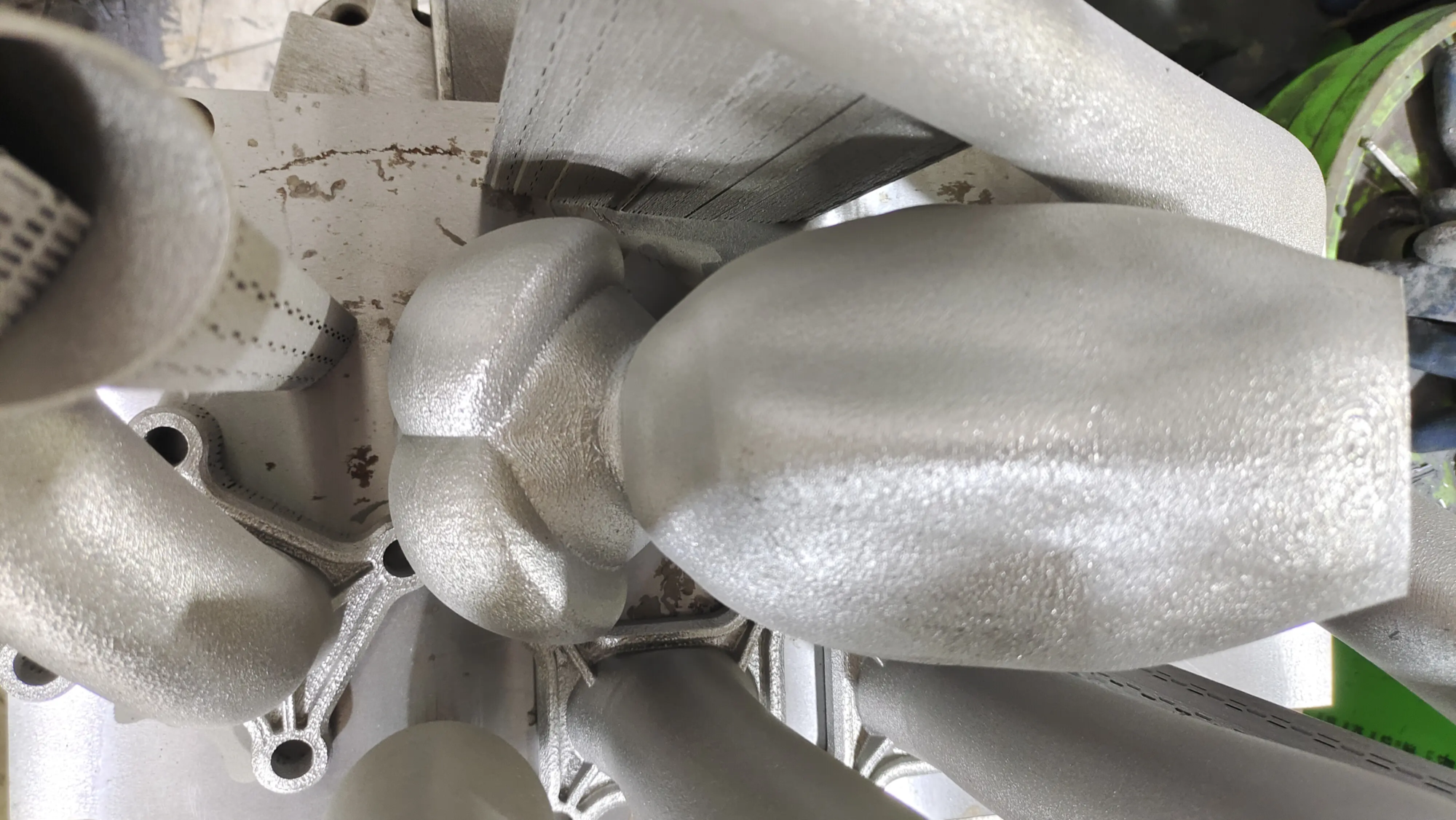The final guide to building a career in 3D printing engineer
The world of manufacturing is undergoing an earthquake shift, and 3D printing (Additive Manufacturing – AM) is in the epicenter. From aerospace components to biomedical implants, the ability to create complex geometric shapes revolutionizes design, prototyping, and production through a layer. What drives this innovation is 3D printing engineers – skilled professionals who turn digital blueprints into tangible reality. If you are fascinated by the boundaries of technology, materials and driving manufacturing, this guide will explore what you need to thrive in this dynamic field.
What exactly do 3D printing engineers do?
3D printing engineers are more than just machine operators. They serve as a bridge between design intent and physical parts, covering a fusion of creative problems and strict technical expertise. Key responsibilities include:
- Design of Additive Manufacturing (DFAM): Convert traditional CAD models to designs optimized for AM processes – maximizing strength, minimizing material use, ensuring printability, and leveraging design freedom, such as internal lattices or consolidation components.
- Process selection and parameter adjustment: Select the best AM technology for each unique project (SLM, FDM, SLA, SLS, EBM, etc.), materials (polymer, metal, ceramic, composite) and carefully define the parameters of each unique project (laser power, scanning speed, temperature, temperature, support structure).
- Printer operation and maintenance: Operate complex industrial-grade printers for preventive maintenance, diagnose hardware problems, and ensure peak calibration performance and part quality.
- Quality control and post-processing: Implement strict inspection protocols (using CMM, CT scanners, etc.), analyze part integrity (density, surface finish, dimensional accuracy), and supervise critical post-processing steps (supports for removal, heat treatment, hip, machining, machining, polishing).
- Materials Science Expertise: Deeply understand material properties, behavior during printing (melt/solidation, thermal stress), compatibility with different processes, and material development.
- Project Management and Client Collaboration: Lead prototype/production projects, manage timelines, work with designers and clients to iterate design and solve technical barriers.
Who hires 3D printing engineers?
AM coverage is vast. You will find opportunities:
- Aerospace and Defense: Lightweight structural components, sophisticated fuel nozzles, fixtures and fixtures.
- Medical and Dental: Custom implants, surgical guides, prosthetics, biocompatible devices.
- car: Prototypes, lightweight components, custom tools, end-use parts.
- Industrial Equipment: Spare parts, custom mechanical components, complex heat exchangers.
- consumer goods: Customized products, rapid prototyping, tools.
- vitality: Custom tools for turbines, radiator components, harsh environments.
- Service Bureau and Contract Manufacturers: The company likes it Great Rapid prototyping and on-demand production specifically for different customers.
Basic Skills Toolkit
To behave as a 3D printing engineer, you need a variety of skills:
- Basic technical skills:
- CAD capabilities: Master software like SolidWorks, Fusion 360, Catia, NX, or Creo. Specific DFAM software (such as Ntopology) is highly valued.
- Deep AM process knowledge: In-depth knowledge of a variety of technologies (SLM, SLS, FDM, SLA, MJF, etc.) – their strengths, weaknesses and best applications, especially in areas such as demanding metal SLM.
- Materials Science Foundations: Metallurgy, polymer science, material characterization, and knowledge of how materials behave in the AM process.
- Slicing software expertise: Proficient in generating and optimizing tool paths (slicing) in software such as Magics, EOS Print, Ultimaker Cura.
- Measuring and testing: The ability to use measurement tools (calipers, microns, CMMs, CT scans) and interpret test data (tensile strength, surface roughness).
- Key soft skills:
- Analysis of the problem and solve it: Diagnose printing failures (warping, porosity, stratification) and develop effective solutions.
- Pay attention to the details: Accuracy is crucial in parameter setting, design inspection and quality control.
- Creativity and Innovation: Find novel ways to take advantage of the unique features of AM.
- communicate: Explain complex technical concepts clearly to designers, managers, and clients.
- project management: Effectively organize tasks, manage schedules and resources.
Educational Pathways and Certifications
- Bachelor of Science: Usually a bachelor’s degree in mechanical engineering, materials science and engineering, industrial engineering, mechatronics or related fields. Master’s degrees are becoming more common, especially for R&D roles.
- Certification: Although less standardized than other fields, the proof proves specific expertise. Examples include:
- SME’s additive manufacturing certification.
- Supplier-specific certification (EOS, Stratasys, GE additives).
- ASM International’s Additive Manufacturing Certificate Program.
- Folder: Hands-on experience is crucial. Build a portfolio to showcase personal projects, university research or internships involving AM design, printing and post-processing.
Climb the career ladder
- Entry level (0 – 3 years): AM Technician Junior AM Engineer: Focus on printer operation, basic design support, post-processing, QC inspection.
- Middle level (3 – 7 years): 3D Printing Engineer, Application Engineer, Process Engineer: Obtain ownership of the project, lead DFAM, optimize parameters, solve complex problems, and contact customers.
- Advanced Level (7 years and above): Senior AM Engineer, Chief Process Engineer, Engineering Manager, R&D Engineer: Strategic Planning, Development of New Processes, Guidance Junior Years, Setting Technical Guidance, Cross-functional Leadership.
- major: The paths are divided into metal AM (especially SLM expertise), polymer AM, material development, DFAM consulting, AM software development, quality and standards and other fields.
Leading to Challenge: Why Partners Is Important
Becoming a 3D printing engineer means addressing cutting-edge challenges every day:
- Process complexity: Metal AMs involve complex melting kinetics, thermal stresses, and require original parameter controls.
- Material Qualifications and Limitations: Ensure printed parts meet strict mechanical and performance specifications, especially in regulated industries.
- High equipment and operating costs: Industrial printers represent huge investments; material costs (especially metals) can be high.
- Post-processing integration: The final functional part often requires complex finishes (CNC machining, EDM, coating, heat treatment).
Here, the Professional Services Bureau becomes a valuable partner for OEM engineers and internal teams. Greatlight illustrates how this partnership works. As a professional rapid prototype manufacturer SLM 3D printing equipment and deep production technology expertiseGreatlight provides basic support:
- Solve complex prototype problems: Our engineers deal with demanding metal parts prototypes that may lack specific SLM experience or capabilities in the internal team.
- End-to-end features: In addition to printing, Greglight provides comprehensive one-stop post-processing and completion services – Handle stress relief, support disassembly, CNC machining, surface finish (polishing, bead blasting), heat treatment and inspection to ensure that parts meet the exact specifications.
- Material versatility and customization: We are with A wide range of materialsincluding challenge alloys, and Provide custom material handling solutions Quickly.
- Accuracy and cost-effectiveness: Focus on Custom precision machining Integrate with AM, Greglight offers high-quality parts at competitive pricesposition us in The best rapid prototype company in China. need Customize precise quick prototyping parts? Get the best price and quality combination of liquids.
Conclusion: The future is layered
As a 3D printing engineer, the profession is not a timid person. It requires continuous learning, adaptability and passion for innovation. But it offers unparalleled opportunities to be at the forefront of the manufacturing revolution. Whether you design rocket engine components or life-saving medical devices, it will shape the future. To address engineers from companies that require internal projects or seek top external expertise, leverage professional partners Great Ensure access to advanced features and speed up the journey from digital models to perfect physical parts. The layer by layer journey has just begun, and 3D printing engineers are essential architects.
FAQ: Your career question for 3D printing engineer has been answered
Q: What salary do I expect as a 3D printing engineer?
- one: Salary varies greatly based on location, experience, industry and specialization. Entry-level positions start at around $60,000-$75,000. Mid-level engineers usually earn $80,000-$110,000. Senior engineers, experts (especially in metal AM), or managers can direct $120,000+. The sector currently offers competitive compensation due to high demand.
Q: Do I need an engineering degree specializing in additive manufacturing?
- one: Although there are specialized AM degree programs that are emerging, they are not generally required or available. Core Engineering Degree (Mechanics, Materials) provides basic knowledge. Employers mainly seek relevant skills and understanding. Complementing your core degree through AM courses, accreditation and practical programs is key.
Q: Do coding/programming knowledge need?
- one: Proficiency in major CAD software is crucial. Python is valuable for automating tasks, analyzing process data, and even developing custom tools for simulation or machine control. While not always mandatory upfront, powerful scripting skills can significantly improve your abilities and career prospects.
Q: How important is practical experience?
- one: Absolutely critical. Academic knowledge is crucial, but employers can give priority to it Do. Seek internships, cooperatives, university lab visits, individual projects, bootcamps or entry-level technician roles that specialize in 3D printers and post-processing equipment. Building a tangible portfolio is not negotiable.
Q: What is the biggest challenge in metal 3D printing (such as SLM)?
- one: Metal AM complexity. Challenges include controlling thermal stress to minimize distortion and rupture, achieving consistent material density (avoiding porosity), designing effective support structures, ensuring reliable powder handling, and managing the comprehensive post-processing workflow required to achieve final functionality, certified parts. Expertise in these areas is often honed at leading service providers like Greatlight, which is invaluable.
Q: Can I transition from a traditional manufacturing background to this role?
- one: Yes! Experience in CNC machining, tools, quality control, materials science or design engineering is very relevant. Your understanding of manufacturing process, GD&T, material behavior and quality standards provides you with a good foundation. Focus on acquiring specific DFAM principles, AM process knowledge and software skills through targeted learning and projects.
- Q: How do companies benefit from working with AM Service agencies such as Greatlight?
- one: Partners offer important advantages: Visit Advanced SLM technology and expertise No large amount of capital investment; use expertise Complex metal prototype production Challenge; get Cost and time efficiency Through optimized workflow and volume; Comprehensive one-stop service Seamlessly process printing, finishing and inspection; and click Customized material functions and Quick turnaround time. They get rid of risky projects and accelerate innovation.





